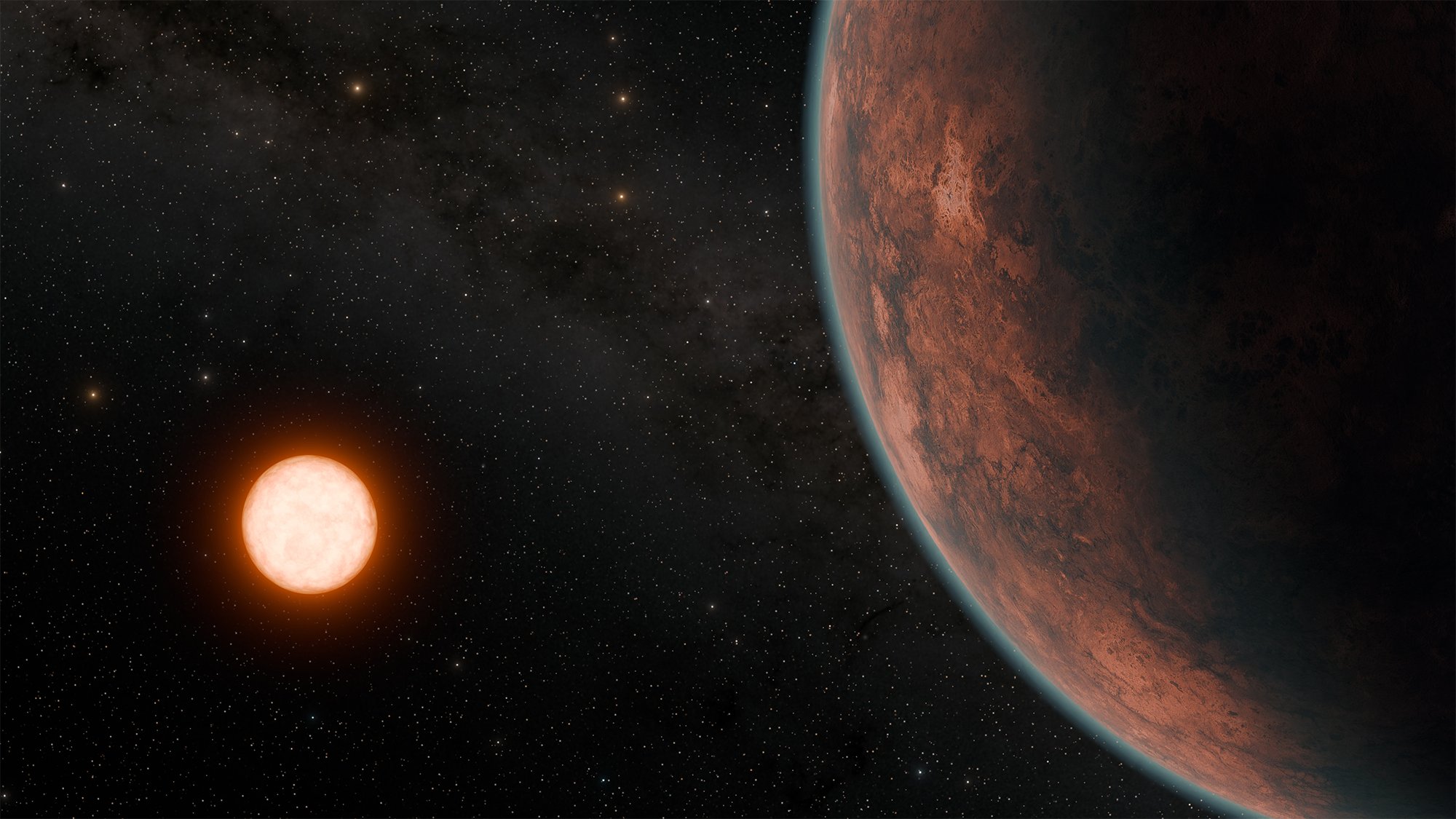

A team of astronomers have found a potentially habitable exoplanet about 40 light-years away in the constellation Pisces. Exoplanet Gliese 12 b is slightly smaller than Earth–about the size of our sister planet Venus–and has a fairly temperate surface temperature for an exoplanet. The intriguing new exoplanet is described in a study published May 23 in the journal Monthly Notices of the Royal Astronomical Society.
“Gliese 12 b represents one of the best targets to study whether Earth-size planets orbiting cool stars can retain their atmospheres, a crucial step to advance our understanding of habitability on planets across our galaxy,” Shishir Dholakia, a study co-author and doctoral student at the Centre for Astrophysics at the University of Southern Queensland in Australia, said in a statement.

It’s all in the atmosphere
Gliese 12 b orbits its host star every 12.8 days. It has an estimated surface temperature of 107 degrees Fahrenheit. While pretty warm, that’s a lot lower than most of the roughly 5,000 exoplanets confirmed by astronomers so far. This temperature estimate assumes that it does not have a protective atmosphere. Confirming if Gliese 12 b has an atmosphere is a crucial next step to establishing if it is habitable. Earth’s average surface temperature is 59°F, but that is quickly rising with climate change.
“Atmospheres trap heat and–depending on the type–can change the actual surface temperature substantially,” said Dholakia. “We are quoting the planet’s ‘equilibrium temperature,’ which is the temperature the planet would be if it had no atmosphere.
[Related: Why Venus is so dry.]
The exoplanet could have two very different types of atmospheric setups. An Earth-like atmosphere made up of oxygen, nitrogen, and other life-friendly elements means it could support some types of life. If Gliese 12 b’s potential atmosphere is like Venus, it is an entirely different story. The planet has a runaway greenhouse effect that has made it a 752°F hellscape.
“It is thought that Earth’s and Venus’s first atmospheres were stripped away and then replenished by volcanic outgassing and bombardments from residual material in the solar system,” Larissa Palethorpe, a study co-author and a doctoral student at the University of Edinburgh and University College London, said in a statement. “The Earth is habitable, but Venus is not due to its complete loss of water. Because Gliese 12 b is between Earth and Venus in temperature, its atmosphere could teach us a lot about the habitability pathways planets take as they develop.”
Understanding Gliese 12 b’s atmosphere or lack of one could help reveal if it can maintain temperatures suitable for liquid water or even life to exist on the surface. It could also reveal answers as to why Venus and Earth evolved so differently.
Transit methods and x-ray flares
Gliese 12 b is not the first Earth-like exoplanet to have been discovered. The closest known Earth-like exoplanet to is Proxima Centauri b. It’s only four light-years away, but because it is not a transiting world, we still do not know if it has an atmosphere or can support life.
Most exoplanets are found using the transit method. From our point of view, a planet passes in front of the star that it is circling. This causes a dip in the host star’s brightness, similar to an eclipse. During this transit, the star’s light also passes through an exoplanet’s atmosphere and some wavelengths of light are absorbed. Since different gas molecules absorb different colors, the transit provides a set of chemical fingerprints that instruments about the James Webb Space Telescope (JWST) can detect.
[Related: The Milky Way’s shiniest known exoplanet has glittering metallic clouds.]
Gliese 12 b’s host star–a red-dwarf designated as Gliese 12–is roughly 27 percent the size of our sun with a surface temperature that’s only 60 percent as warm. It also does not show signs of intense magnetic activity and frequent large X-ray flares like many red dwarf stars. This is raising some cautious hope that Gliese 12 b’s atmosphere may be intact.
“Although we don’t yet know whether it possesses an atmosphere, we’ve been thinking of it as an exo-Venus, with similar size and energy received from its star as our planetary neighbor in the solar system,” Masayuki Kuzuhara, a study co-author and astrobiologist at the Astrobiology Center in Tokyo, said in a statement.
The international team of researchers used observations made by NASA’s Transiting Exoplanet Survey Satellite (TESS) to help make this discovery. They hope to use the JWST to make more observations of this potentially Earth-like twin exoplanet.
